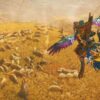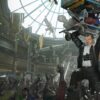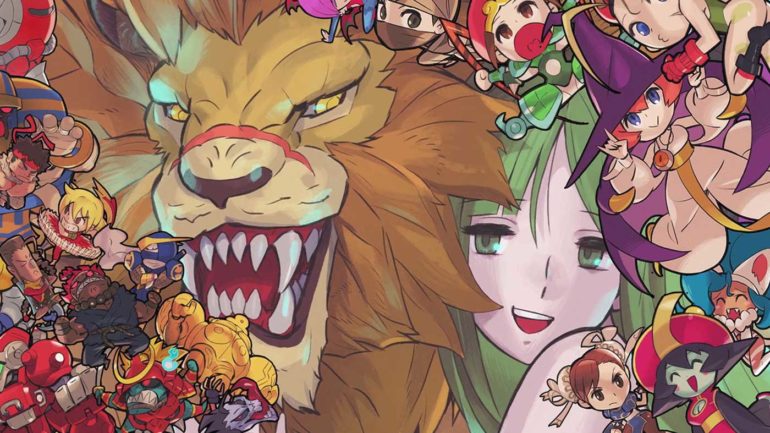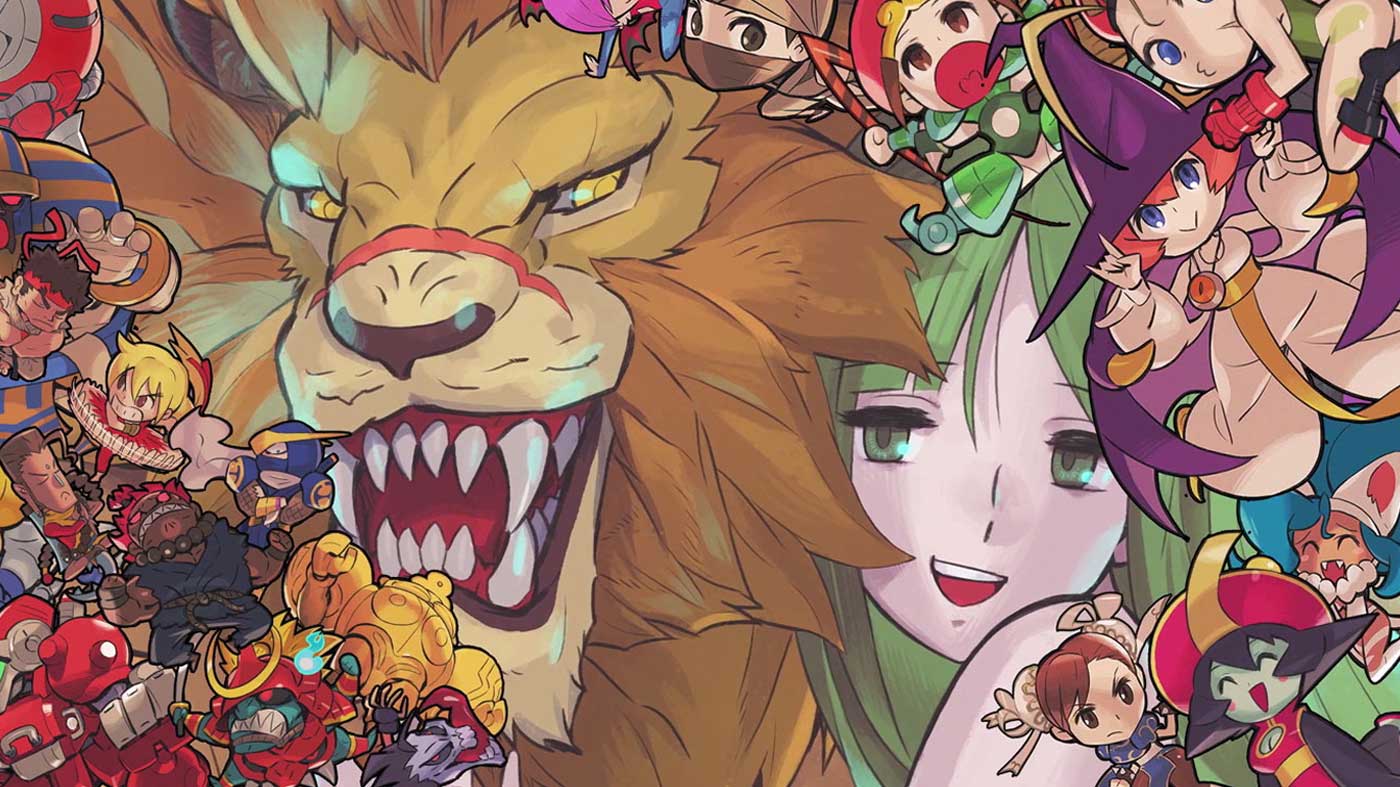Capcom Fighting Collection brings together ten titles from the arcades between 1994 and 2003. Each game is brought together with arcade-perfect parity and other features of modern fighting games like training modes, spectator modes, and rollback style online play. It’s a collection of firsts for the Japanese publisher. The first time Capcom has touched Darkstalkers in almost ten years, the first time that the RPG-tinged Red Earth has been released on home consoles, and the first time the entirety of the Darkstalkers games have been made available outside of Japan.
Much like the Street Fighter collection before it, Capcom has made an effort to ensure this is a collection that fans will appreciate. These games have all been modernised to be playable today – including with the aforementioned online play – and a slew of extras are included as well. Every game has save state support, which is nice, but also a heap of concept art and design documents to pore over. It’s interesting stuff, especially if you’re into game development, with some of these materials having never seen the light of day. It’s always interesting to see how a game begins and how it comes out at the end of development.
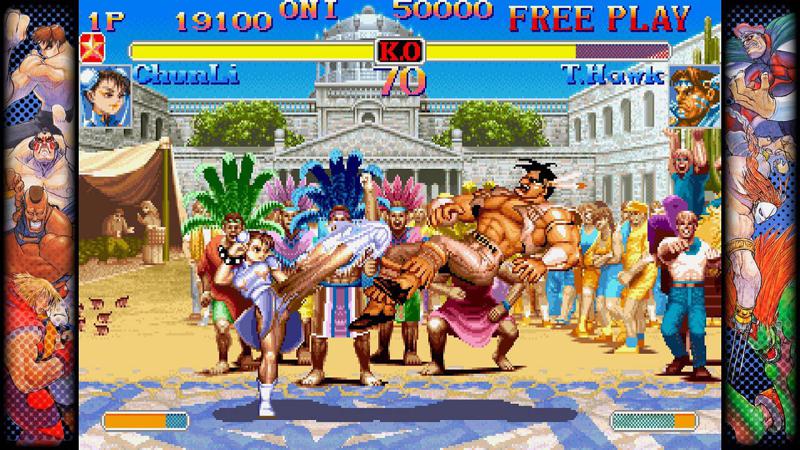
The games are all largely fantastic – though this is arguably a Darkstalkers collection with five extra games thrown in. Besides the five Darkstalkers games, you also get Red Earth, Cyberbots, Hyper Street Fighter II, Super Puzzle Fighter II and Super Gem Fighter Mini Mix. Besides Puzzle Fighter, all the other games are fighting games with distinctly different styles.
The crux of the package is dedicated to Darkstalkers, and for a fantastic reason. The series has always been in the shadow of Street Fighter despite offering a faster and more fluid flow to combat and a, by comparison, even zanier cast. I’d often thought that these games were just Street Fighter but gothic. The latter might be accurate, but these games feel more like precursors to the more fast and frenetic games like Marvel vs. Capcom. They still play as smooth as ever today, and I’m kicking myself for not having dived into them sooner.
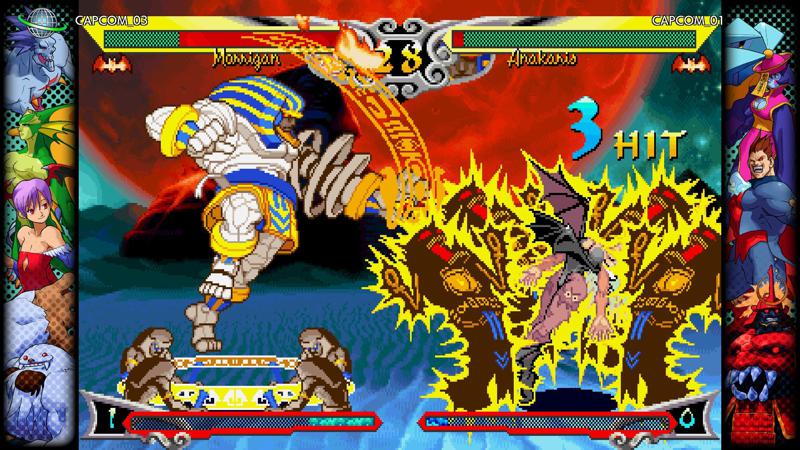
Besides the Darkstalkers games, the other arguable standout here is Red Earth. First released over two decades ago in arcades, it has you picking one of four heroes to battle a gauntlet of eight bosses. The twist here is that your character gains experience with each hit to level up and discover new moves. A password system saves your progress (much like it did in the arcade), and each character has multiple endings. It’s a simpler game than others – especially with such a small playable roster – but it’s one of the stronger single-player offerings from this era of fighting games, and the sprite work is just gorgeous.
The other three games are great but not ones I rush to play. Hyper Street Fighter II is a souped-up port of Super Street Fighter II Turbo, but easily the best-looking Street Fighter II version that wasn’t included in the anniversary collection from 2018. Cyberbots is interesting – it has you choosing a pilot and a mech and then doing battle – but lacks the personality or the thrill of the other games in the collection. Puzzle Fighter feels like Capcom’s take on Puyo-Puyo, similar to Tetris and games like Columns. Super Gem Fighter is great fun, if a little ridiculous, and sees chibi versions of Street Fighter and Darkstalkers characters battling it out.

Online modes are included and are fantastically implemented. Each game has casual and ranked matches available to players, but you can also switch which games you want to find while matchmaking rather than just matchmaking for a single game. It’s more minor touches like these that help contribute to the online health of a game. However, other more significant missteps like the lack of crossplay seem like a major missed opportunity here. Thankfully, the online works fantastically despite all of this, though I still hope there’s some way to make things crossplay in the future.
There’s also a bit of an issue with the Darkstalkers games. There isn’t a single game that features all eighteen characters playable. Instead, the full roster is scattered across the three later games in the collection that players will have to jump between. It seems like something unreasonable to complain about but a definitive version of the latest Darkstalkers game with all characters already exists. The home port of Darkstalkers 3 for the original PlayStation was originally released in 1998 with the full roster, so the choice to exclude this more “definitive” port over dedication to arcade perfect emulation irks me a little. Still, the menus are snappy, and it’s quick to get around the collection, which somewhat makes up for this.
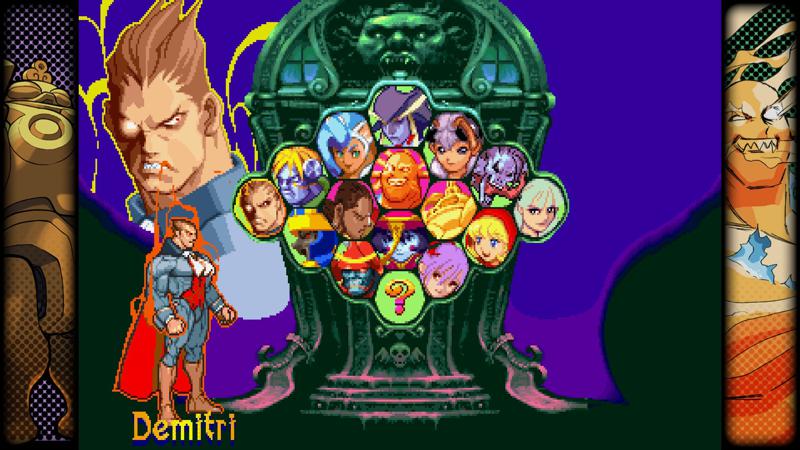
Besides the slick menus, an excellent level of production value holds this collection together. You can adjust the size of the screen and the background surrounding the screen and apply filters that alter the game to look like the screens you might have played these games on back at the arcade. Viewability aside, the sprite work on many of these games is still fantastic. Red Earth is easily the standout here – though the character that each of the Darkstalkers characters has with their expressive and over-the-top animations is genuinely something to behold. These games don’t look photorealistic, but they’ve aged fantastically over two decades.
Capcom Fighters Collection brings together some great games you couldn’t play until now – the cornerstone of a good collection. They play fantastically, the online functionality is more than welcome, and they all still hold up visually. Despite there being no crossplay and no singular definitive Darkstalkers game, it’s still a well-rounded package that any self-respecting fighting game fan should try.
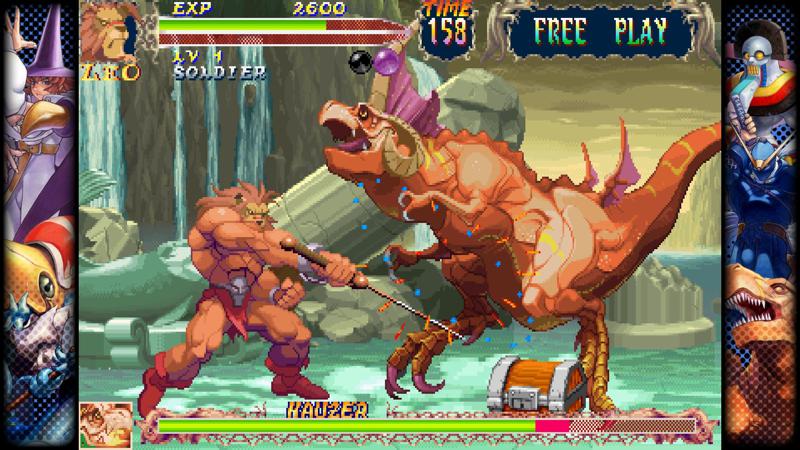
THE XBOX ONE VERSION WAS PLAYED FOR THE PURPOSE OF THIS REVIEW. A DIGITAL COPY OF THE GAME WAS PROVIDED BY THE PUBLISHER.
